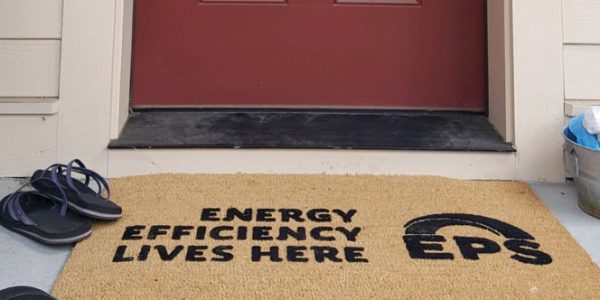Tips for buying an energy efficient home

The home buying process is, well, a process. It’s important to have conversations about efficiency during the homebuying process and not just after so that you can find an energy efficient home–or at least on that can be upgraded for efficiency. These simple tips can save a lot of energy further down the road.
Work with an Earth Advantage Broker or GREEN designee
Earth Advantage is a nonprofit organization based here in the NW that works to accelerate the adoption of sustainable homes. EA Brokers are green designated real estate professionals who have successfully completed in-depth training and gained comprehensive knowledge on the health, comfort, durability, and energy efficiency benefits of high performance homes in their market. They can help you discover green features; recommend home upgrades, incentives, and rebates; provide information on solar; and so much more. You can find a list of accredited professionals here.
The National Association of REALTORS also has a GREEN designation. You can find those professionals here.
Look for key (in)efficiency features
Keep an eye out for features that might give you an indication if you have found an energy efficient home–or one that might need some improvements. (Thank you to Realtor Rick Sams for these tips from his April 2020 Power Hour presentation).
- Age of the home: Homes built before 1992 were required by code to have less insulation. Insulation can be upgraded but it is an important distinction to be aware of.
- Outside noise: This can be an indication that insulation and air leakage may need attention. Check windows and doors as big culprits.
- Windows and doors: How well do the seal? Do they rattle?
- Craftsmanship: Details in the home may be an indication of overall building quality.
- Water heater: Make sure to take note of how old the water heater is and the make and model. You can look up the efficiency of the water heater if you can’t readily find the EnergyGuide sticker on the unit. If the water heater is electric, one of the biggest energy-saving upgrades you can make is to switch to a heat pump water heater.
- HVAC: Is the home heated with gas or electricity and what is the efficiency of the furnace/heating system? If the heat pump is more than 10 years old or the furnace is more than 15 years old, an upgrade could save you up to 20% on heating costs. Beyond saving energy, newer systems maintain better indoor air quality. See below for more info on electrically heated homes.
- Appliances: New appliances have more than just curb appeal, if they are Energy Star certified, they can save A LOT of energy.
Know what you can and can’t fix
This list could be a lengthy list so here is just one example (your Earth Advantage Broker will be able to help you pick out more obstacles and/or opportunities)! From an efficiency perspective, some heating systems are a lot harder to upgrade than others. For almost all homes with electric resistance heat (baseboards or cadets), getting a more efficient heating system is going to be at the top of the efficiency to do list.
In a home that doesn’t already have ducts, a ductless heat pump is a cost-effective upgrade towards an energy efficient home. However, you will want to take note of the floor plan of the home. A segmented home can make it difficult to heat the living space with a central head. Many retrofitted homes will have a central head in the main living space then use backup heat in the bedrooms and bathrooms. This is a significant boost to efficiency but can require you to still rely heavily on inefficient backup heat in many rooms. Maybe you don’t mind a cool bedroom–that’s great! You just can’t heat some homes in their entirety with a DHP so it’s important to know what your needs are, what goals you have for the overall efficiency of your home, and recognize if it’s going to be hard or costly to put in a more efficient heating system.
Consider the energy efficient home’s solar potential
You’ll really be kicking yourself in a few years if you find out your home simply isn’t a good fit for solar. Home orientation, trees, chimneys, and roof features like dormers can limit your home’s solar potential. If you want to add solar now or later, a southern exposure is preferred, followed by east and then west-facing roofs. Depending on the size of your system, you’re going to want at least 200 sq ft of unobstructed space. You can call a local solar contractor and have them virtually look at the roof to assess its solar potential. If you’re serious about solar, or the home, you can have them come out to do a free assessment.
Find out if the home has an energy certification or an energy score